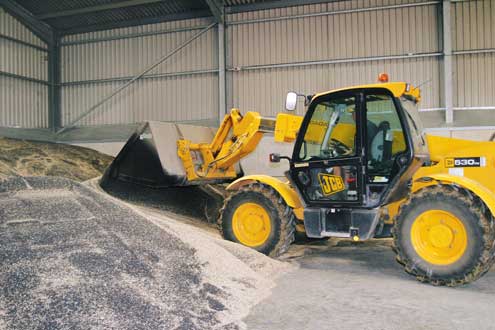Hybrid OSR development gathers pace

Hybrid development is gathering pace, but there’s still plenty of life in conventional oilseed rape varieties, as Louise Impey finds out
In a highly competitive market, conventional oilseed rape varieties are holding their own.
That’s the view of several variety experts, who point out here’s very little difference between the performance of hybrid and conventional oilseed rape varieties on the HGCA Recommended List and certainly no clear advantage from hybrids.
“Only 1% separates the top two,” says Simon Kightley of NIAB TAG, who believes growers should be looking for consistency from an oilseed rape variety, rather than focussing on its breeding method.
“That’s why the top two oilseed rape varieties on the HGCA Recommended List for the east and west region – PR46W21 and DK Cabernet – are both good choices. They’ve shown tremendous consistency in trials.
| Oilseed rape candidates |
|---|
| For the east/west region, interest in the oilseed rape candidates is mainly focussed on six of the sixteen contenders. The leading hybrids are considered to be Marathon, Avatar and DK Excellium, while the most prominent conventionals at this stage are Patron and Quartz. But some concern about stem strength is being voiced, as existing varieties with a score of seven for resistance to lodging have succumbed to this year’s wet and windy conditions. “It’s probably fair to say the taller hybrids are more at risk of lodging in a wet year if there’s any indication of stem weakness,” says Mr Kightley. Troy is the other name on everyone’s lips. A semi-dwarf hybrid, it represents a big stride for that group and will put them in serious contention. In the North there are two sets of candidates. Of those coming up for recommendation this year, only PT206 and DK Expower appear to be comparable to those already on the list. Beyond 2013, the semi-dwarf Troy is making all the running. “If the early data on Troy is true, you have to ask yourself why you wouldn’t grow it,” says Mr Kightley. |
The need to spread risk and cope with unpredictable weather conditions means complementary variety selections make sense, he adds. “Of the conventionals, consider growing Sesame and Fashion alongside DK Cabernet. And among the second choice hybrids to go with PR46W21 is DK Expower, which was added to the list for this year.”
Other newcomers include DK Camelot, a conventional variety, and Thorin, a hybrid semi-dwarf. “Both of these have got some good characteristics. DK Camelot is a short variety, with high yield potential.”
Thorin, the semi-dwarf hybrid, represents a step up for this type and offers yield and ease of management, he says.
Philip Marr of Agrii believes the popularity of the wide rows concept for establishing oilseed rape means the fast-developing, high-biomass varieties with good disease resistance will be favoured on farms where the technique is being used.
“This establishment method lends itself to hybrids,” he says. “So existing varieties such as Compass, Excalibur and DK Expower are in the running, while candidates DK Excellium and PT211 would be good choices.”
Jim Carswell of Frontier Agriculture agrees. “For the wide rows system to work well, you need varieties that are very vigorous in the autumn and provide plenty of ground cover.”
Mr Marr believes there is a select group of varieties that deserve attention from growers this autumn. “If you are on club root-infected soil there’s a choice between Cracker and a new one, candidate SY Alister.”
Of the conventionals, he picks out DK Cabernet and Catana as solid, proven performers, as well as highlighting two candidates of interest, Quartz and Bronze.
| What about Clearfield? |
|---|
| The first Clearfield oilseed rape varieties will be on the market this autumn. Their in-bred resistance to imadazoline herbicides means weed control in the oilseed rape crop can be approached in a different way, with some of the more difficult brassica weeds being controlled very effectively from a September/October application. But the BASF herbicide developed for the Clearfield system, Cleranda (metazachlor + imazamox), doesn’t control resistant blackgrass and is based on ALS-inhibiting chemistry, which puts it in the same group as sulfonylureas. That means it’s a system that has to be managed carefully, as Clearfield volunteers could become very difficult to control in following crops, say agronomists. “It’s an interesting concept and idea, and the herbicide works well,” reports Richard Elsdon of United Oilseeds. “But we are going to need to learn how to use it and growers should proceed with caution.” DK Imagine CL is a candidate for the 2013 Recommended List, while Pioneer has PT200CL, PX100CL and PT216CL on the market. A further choice, Clifton CL, comes from LSPB. With a gross output of 102%, DK Imagine CL probably doesn’t offer enough unless growers have a specific and very serious weed problem, says Mr Kightley. “They’re not directly competitive at the moment, as they don’t fall into a different quality or value group.” |

